
Resultant Force Using Pythagoras QWNEWSAHS
When two different forces act on the same object, we can find the resultant force acting on the object by adding the two separate forces. In this example, we find a resultant force vector using geometry, specifically the laws of sines and the laws of cosines. Created by Sal Khan. Questions Tips & Thanks Want to join the conversation? Sort by:

Magnitude and angle of the resultant force YouTube
The resultant force formula is the formula that calculated the resultant of all the force acting on the body. If F 1, F 2, F 3 ,… are the forces acting on a body, the resulting force R F is calculated using the formula with positive and negative signs used for pair of opposite forces. FR = F1 + F2 + F3 . . . where,

[Physics] How to know what method to use when finding resultant forces Math Solves Everything
A resultant force is the overall force that acts on the object. Remember that forces are vectors. When you calculate the resultant force you need to also say the direction it is.

Find the resultant force YouTube
The Resultant force formula is given by, FR = F1 + F2 + F3 Where F1, F2, F3 are the three forces acting in the same direction on an object. Solved Example of Resultant Force Example 1 Determine the FR when three forces such as 80 N, 100 N, and 30 N are acting on an object simultaneously and 30 N force is opposite to the other two forces. Solution:
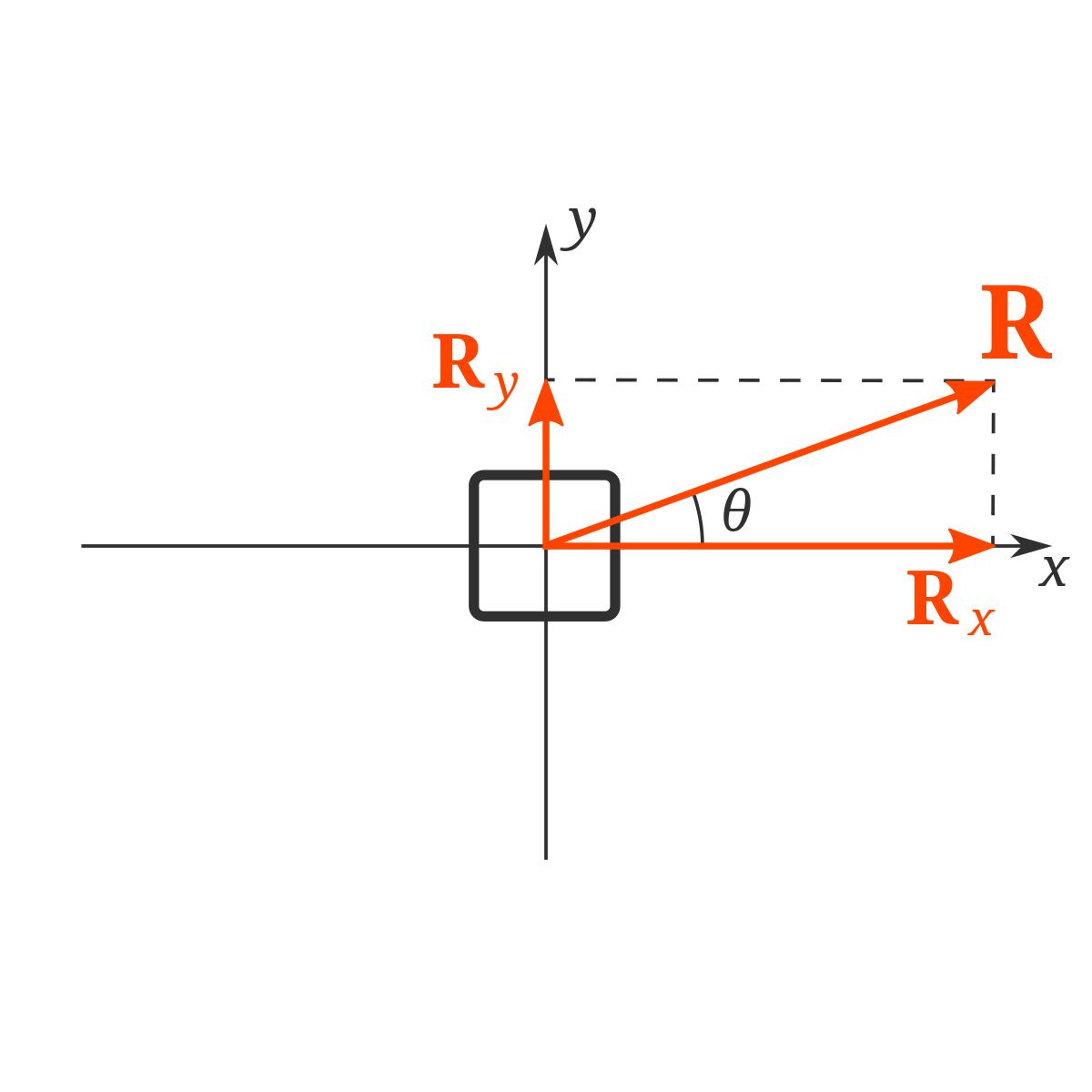
Ideal Resultant Force Definition Physics What Is Displacement Reaction
Learn what the resultant force (also known as net force) is, and how to find it when an object is subject to parallel forces as well as non-parallel forces with the help of examples.

University physics. Forces review of basic concepts online presentation
Omni's net force calculator allows you to determine the resultant force on a body when several forces act simultaneously on it. Continue reading this article to know what net force is and how to find the net force on an object. You will also see some examples of net force calculations.
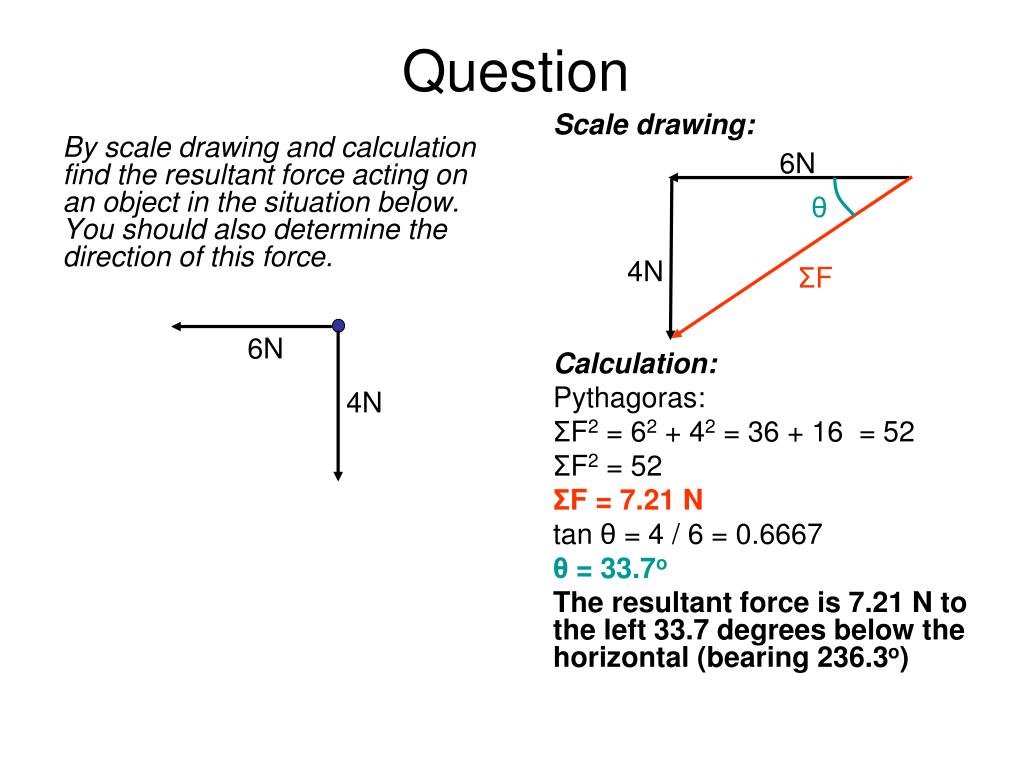
Spice of Lyfe Physics Formula For Resultant Force
Graphical placing of the resultant force. In physics and engineering, a resultant force is the single force and associated torque obtained by combining a system of forces and torques acting on a rigid body via vector addition.The defining feature of a resultant force, or resultant force-torque, is that it has the same effect on the rigid body as the original system of forces.
1.15 Calculate the resultant force of forces that act along a line Physics Revision
B. Worked Out Example: Calculating Resultant Force of Two Forces. Let's consider an example to better understand how to calculate the resultant force. Suppose we have two forces: ( F_1 ) with a magnitude of 10 N acting at an angle of 30 degrees, and ( F_2 ) with a magnitude of 8 N acting at an angle of 60 degrees. Using the resultant force.

Resultant Force Two Forces ExamSolutions YouTube
An online resultant force calculator is presented. Resultant Force The resultant force due to several forces →F1, →F2,. acting on an object is the force →Rf that has the same physical effects as the different forces acting on that object.
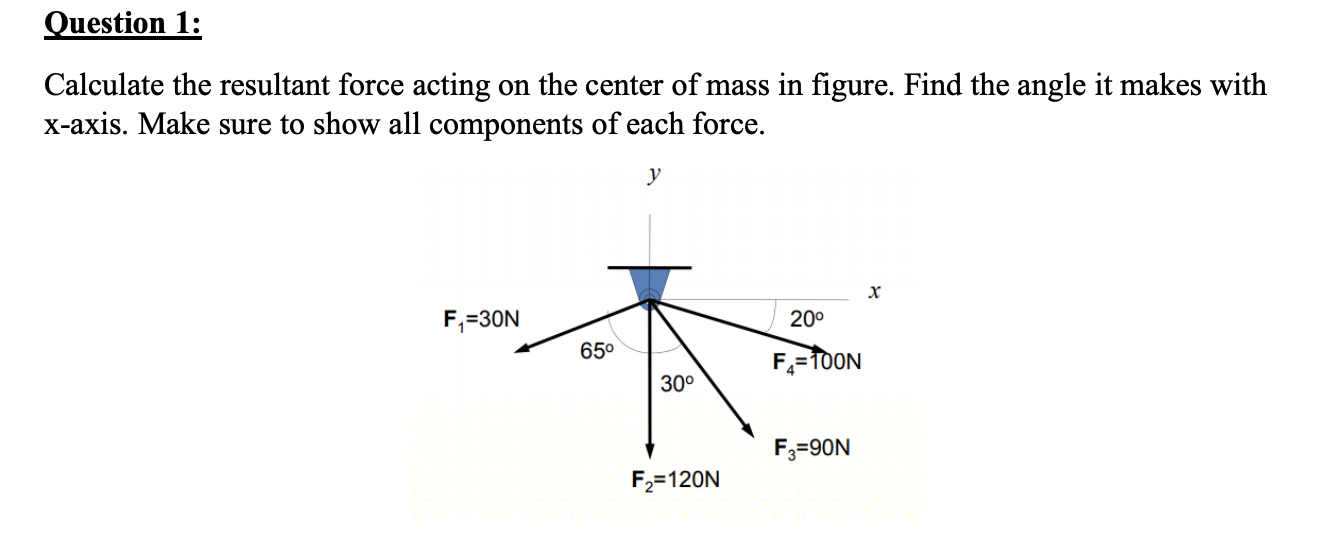
Solved Question 1 Calculate the resultant force acting on
Learn how to calculate resultant force using examples. Updated: 11/21/2023 Table of Contents What is Resultant Force? Resultant Force Formula How to Calculate Resultant Force Lesson.

Calculating Force YouTube
How to find the resultant force? Is This Tool Helpful? Yes No Maybe Resultant force Calculator The resultant force calculator finds the magnitude and the direction of the resultant force. You can find the resultant for up to 2 force vectors.

Lesson Video Resultant of Two Forces Nagwa
GCSE Physics - Resultant Forces & Free Body Diagrams #42 - YouTube © 2023 Google LLC This video covers: - What a resultant force is - What free body diagrams are - How to calculate the.
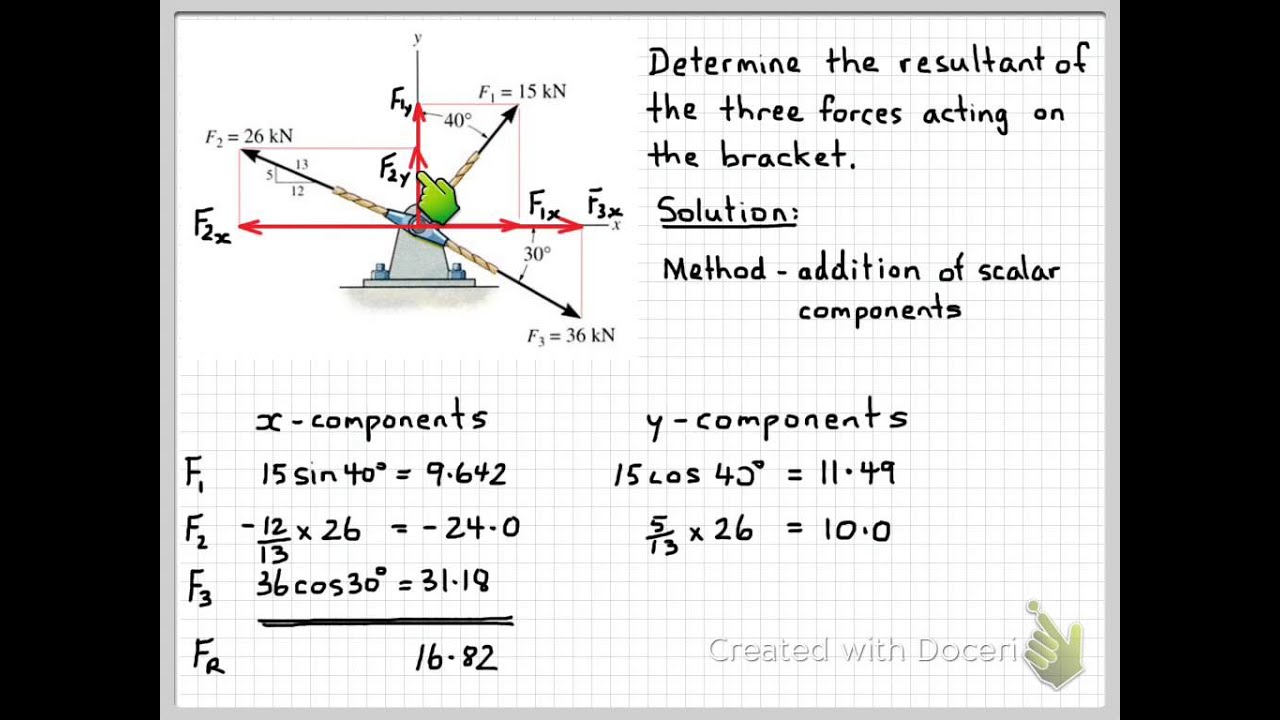
Concurrent Force System Example Problems
To calculate the resultant force, you can use the following formula: Resultant Force (R) = √ [ (F₁ cos (θ₁) + F₂ cos (θ₂))^2 + (F₁ sin (θ₁) + F₂ sin (θ₂))^2] Where: R is the resultant force. F₁ and F₂ are the magnitudes of the two forces. θ₁ and θ₂ are the angles at which the forces are applied.
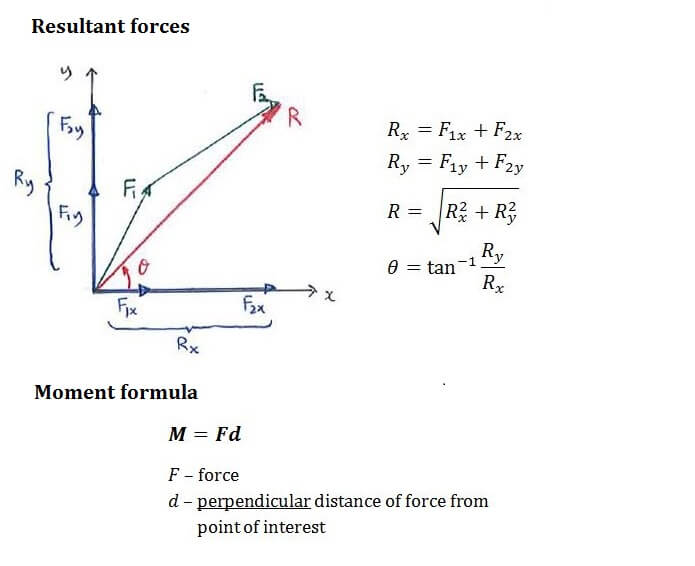
Example C1.3 Resultants Statics
The Resultant force formula is given by, FR = F1 +F2 +F3 Where, F1,F2,F3 are the forces acting in the same direction on a body. If F2 is perpendicular to F1, then the resultant force formula is given as, FR = (F21 + F22)− −−−−−−−√ Notice that this is not merely the sum of the magnitudes of the forces.

Resultant Force Example Problems MEWSNYH
The Resultant Force Calculator is a physics tool used to determine the net force acting on an object when multiple forces are applied to it. It's essential for understanding the combined effect of forces and predicting an object's motion and behavior.

Determine the magnitude and direction of the resultant force. YouTube
Example: Two forces 300 N at 0 degrees and 400 N at 90 degrees pull on an object. Answer the following (Use the tail-tip method): a.Draw a diagram showing the forces acting on the object. b.Draw a sketch showing the vector sum of two forces. c.Find the magnitude of the resultant force.